The Spatial–Temporal Characteristics of Wave Energy Resource Availability in the China Seas
Abstract
1. Introduction
2. Data and Methodology
2.1. Data
2.2. Methodology
3. Regional and Monthly Differences in SWH
3.1. Regional Differences in Annual Average SWH
3.2. Monthly Differences in SWH
4. Regional and Monthly Differences in EWHO
4.1. Regional Differences in Annual Average EWHO
4.2. Monthly Differences in EWHO
5. Trends in EWHO
5.1. Overall Variation
5.2. Regional Differences in EWHO
5.3. Dominant Month of EWHO Trends
6. Correlations Between EWHO and Climate Indices
6.1. Correlation Between EWHO and NINO3 Index
6.2. Correlation Between EWHO and AMOS
7. Suggestions for Site Selection for Wave Energy Development
8. Conclusions
Author Contributions
Funding
Data Availability Statement
Conflicts of Interest
References
- Zheng, C.W.; Li, X.H.; Azorin-Molina, C.; Li, C.Y.; Wang, Q.; Xiao, Z.N.; Yang, S.B.; Chen, X.; Zhan, C. Global trends in oceanic wind speed, wind-sea, swell, and mixed wave heights. Appl. Energy 2022, 321, 119327. [Google Scholar] [CrossRef]
- Wan, Y.; Zhang, J.; Meng, J.M.; Wang, J. Exploitable wave energy assessment based on ERA-Interim reanalysis data—A case study in the East China Sea and the South China Sea. Acta Oceanol. Sin. 2015, 34, 143–155. [Google Scholar] [CrossRef]
- Wan, Y.; Zhang, J.; Meng, J.M.; Wang, J.; Dai, Y.S. Study on wave energy resource assessing method based on altimeter data—A case study in Northwest Pacific. Acta Oceanol. Sin. 2016, 35, 117–129. [Google Scholar] [CrossRef]
- Iglesias, G.; Carballo, R. Choosing the site for the first wave farm in a region: A case study in the Galician Southwest. Energy 2011, 36, 5525–5531. [Google Scholar] [CrossRef]
- Iglesias, G.; Carballo, R. Wave power for la isla bonita. Energy 2010, 3, 5013–5021. [Google Scholar] [CrossRef]
- Khojasteh, D.; Mousavi, S.M.; Glamore, W.; Iglesias, G. Wave energy status in Asia. Ocean. Eng. 2018, 169, 344–358. [Google Scholar] [CrossRef]
- Akpınar, A.; Bingolbali, B.; Van Vledder, G.P. Long-term analysis of wave power potential in the Black Sea, based on 31-year SWAN simulations. Ocean Eng. 2017, 130, 482–497. [Google Scholar] [CrossRef]
- Shao, Z.X.; Liang, B.C.; Li, H.J.; Wu, G.X.; Wu, Z.H. Blended wind fields for wave modeling of tropical cyclones in the South China Sea and East China Sea. Appl. Ocean. Res. 2018, 71, 20–33. [Google Scholar] [CrossRef]
- Semedo, A.; Suselj, K.; Rutgersson, A.; Sterl, A. A global view on the wind sea and swell climate and variability from ERA-40. J. Clim. 2011, 24, 61–79. [Google Scholar] [CrossRef]
- Dodet, G.; Bertin, X.; Taborda, R. Wave climate variability in the North-East Atlantic Ocean over the last six decades. Ocean. Model. 2010, 31, 120–131. [Google Scholar] [CrossRef]
- Gower, J.F.R. Temperature, wind and wave climatologies, and trends from marine meteorological buoys in the northeast Pacific. J. Clim. 2002, 15, 3709–3718. [Google Scholar] [CrossRef]
- Sterl, A.; Caires, S. Climatology, variability and extrema of ocean waves: The web-based KNMI/ERA-40 wave atlas. Int. J. Climatol. 2005, 25, 963–978. [Google Scholar] [CrossRef]
- Gulev, S.K.; Grigorieva, V. Variability of the winter wind waves and swell in the North Atlantic and North Pacific as revealed by the voluntary observing ship data. J. Clim. 2006, 19, 5667–5685. [Google Scholar] [CrossRef]
- Gupta, N.; Bhaskaran, P.K.; Dash, M.K. Recent trends in wind-wave climate for the Indian Ocea. Curr. Sci. 2015, 108, 2191–2201. [Google Scholar]
- Akpınar, A.; Jafali, H.; Rusu, E. Temporal variation of the wave energy flux in hotspot areas of the Black Sea. Sustainability 2019, 11, 562. [Google Scholar] [CrossRef]
- Liang, B.C.; Liu, X.; Li, H.J.; Wu, Y.J.; Lee, D.Y. Wave Climate Hindcasts for the Bohai Sea, Yellow Sea, and East China Sea. J. Coast. Res. 2016, 32, 172–180. [Google Scholar]
- Zheng, C.W.; Xiao, Z.N.; Peng, Y.H.; Li, C.Y.; Du, Z.B. Rezoning global offshore wind energy resources. Renew. Energy 2018, 129, 1–11. [Google Scholar] [CrossRef]
- Wan, Y.; Zheng, C.; Li, L.; Dai, Y.; Esteban, M.D.; López-Gutiérrez, J.S.; Qu, X.; Zhang, X. Wave energy assessment related to wave energy convertors in the coastal waters of China. Energy 2020, 202, 117741. [Google Scholar] [CrossRef]
- Falnes, J. A review of wave-energy extraction. Mar. Struct. 2007, 20, 185–201. [Google Scholar] [CrossRef]
- Bertin, X.; Prouteau, E.; Letetrel, C. A significant increase in wave height in the NorthAtlantic Ocean over the 20th century. Glob. Planet Change 2013, 106, 77–83. [Google Scholar] [CrossRef]
- Islek, F.; Yuksel, Y.; Sahin, C. Spatiotemporal long-term trends of extreme wind characteristics over the Black Se. Dyn. Atmos. Ocean. 2020, 90, 101132. [Google Scholar] [CrossRef]
- Akpınar, A.; Bingölbali, B. Long-term variations of wind and wave conditions in the coastal regions of the Black Se. Nat. Hazards 2016, 84, 69–92. [Google Scholar] [CrossRef]
- Başaran, B.; Güner, H.A.A. Effect of wave climate change on longshore sediment transport in Southwestern Black Sea. Estuar. Coast. Shelf Sci. 2021, 258, 107415. [Google Scholar] [CrossRef]
- Zhang, X.; Zhang, J.; Fan, C.; Meng, J.; Wang, J.; Wan, Y. Analysis of Dynamic Characteristics of the 21st Century Maritime Silk Roa. J. Ocean. Univ. China 2018, 17, 487–497. [Google Scholar] [CrossRef]
- Han, W.; Yang, J. Wave height possibility distribution characteristics of significant wave height in China Sea based on multi-satellite grid dat. Conf. Ser. Earth Environ. Sci. 2016, 46, 012033. [Google Scholar] [CrossRef]
- Wang, Y.; Liu, Y.; Mao, X.; Chi, Y.; Jiang, W. Long-term variation of storm surge-associated waves in the Bohai Se. J. Oceanol. Limnol. 2019, 37, 1868–1878. [Google Scholar] [CrossRef]
- Zheng, C.; Li, C. Overview of site selection difficulties for marine new energy power plant and suggestions: Wave energy case study. J. Harbin Eng. Univ. 2018, 39, 200–206. [Google Scholar]
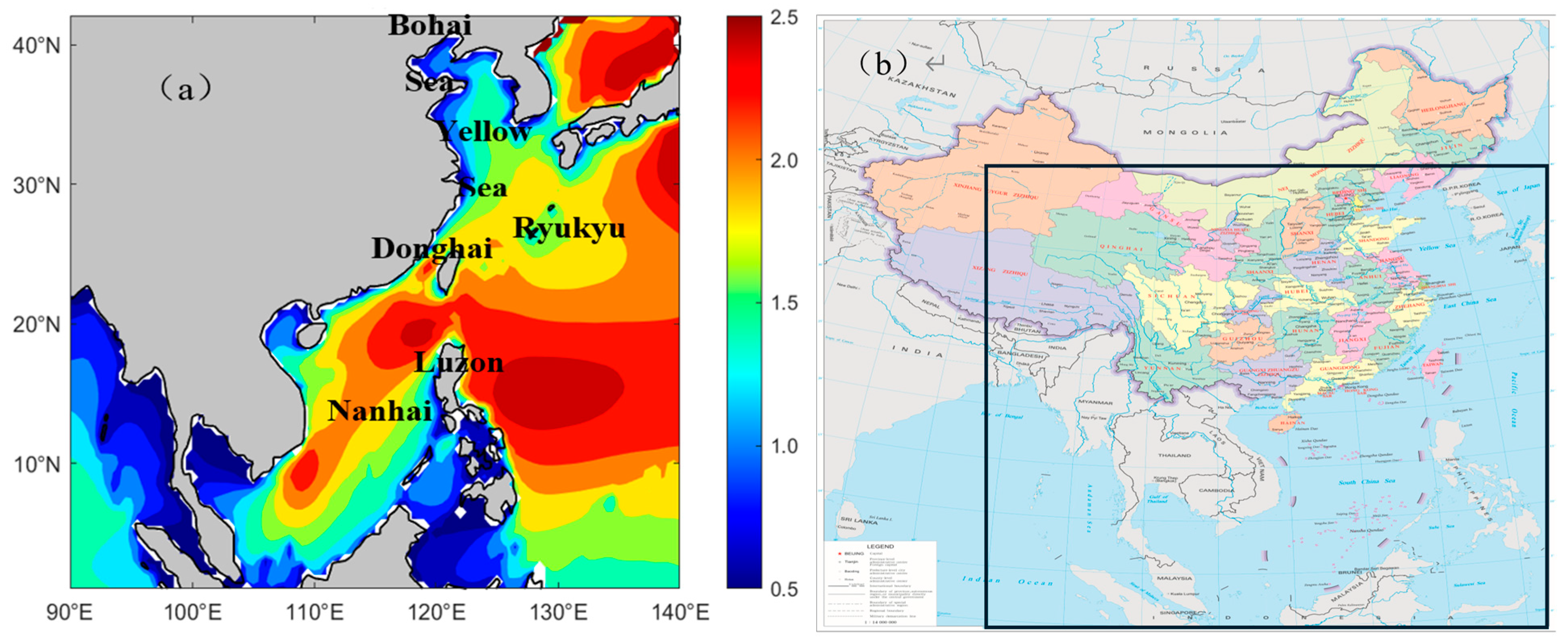
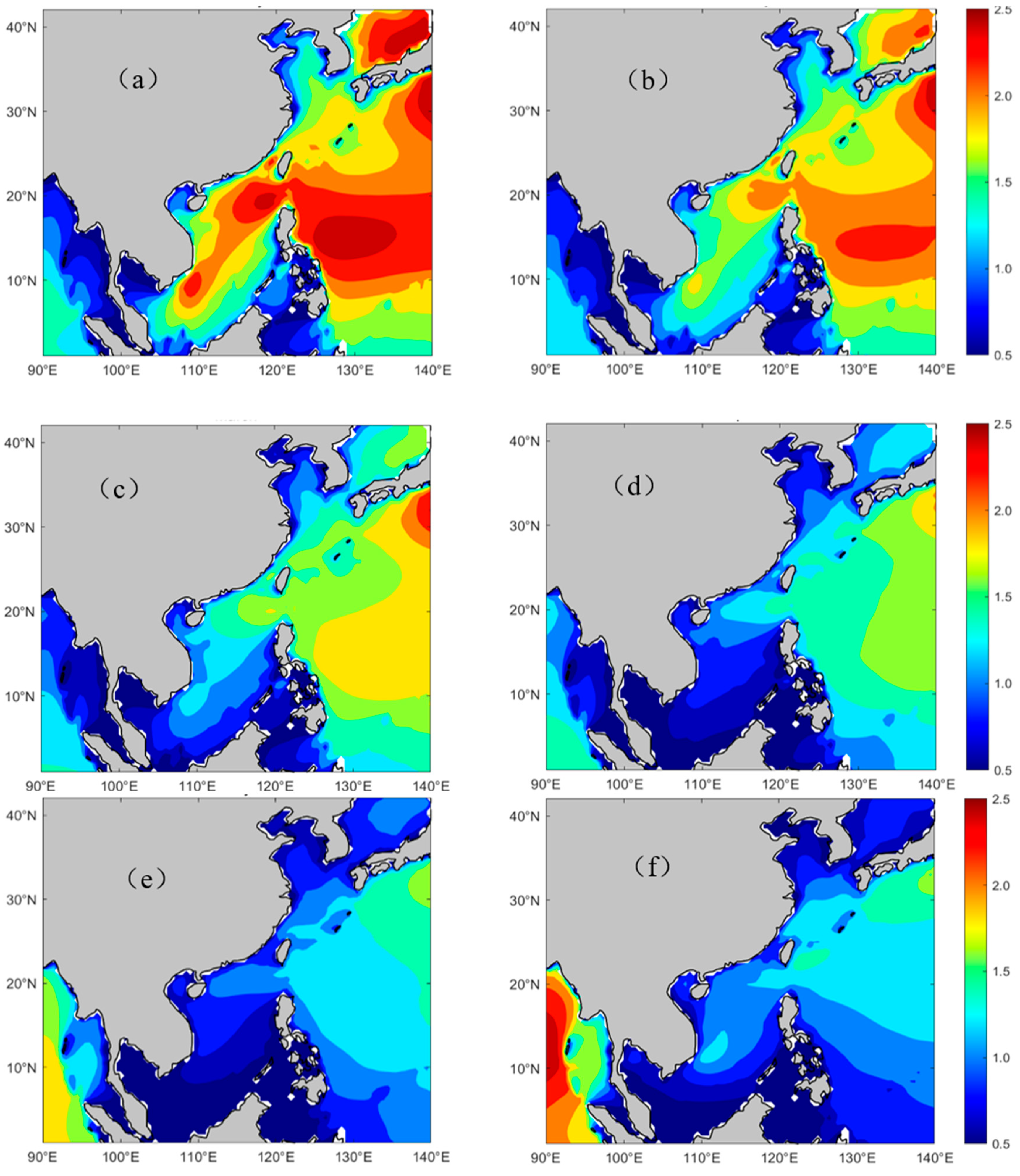

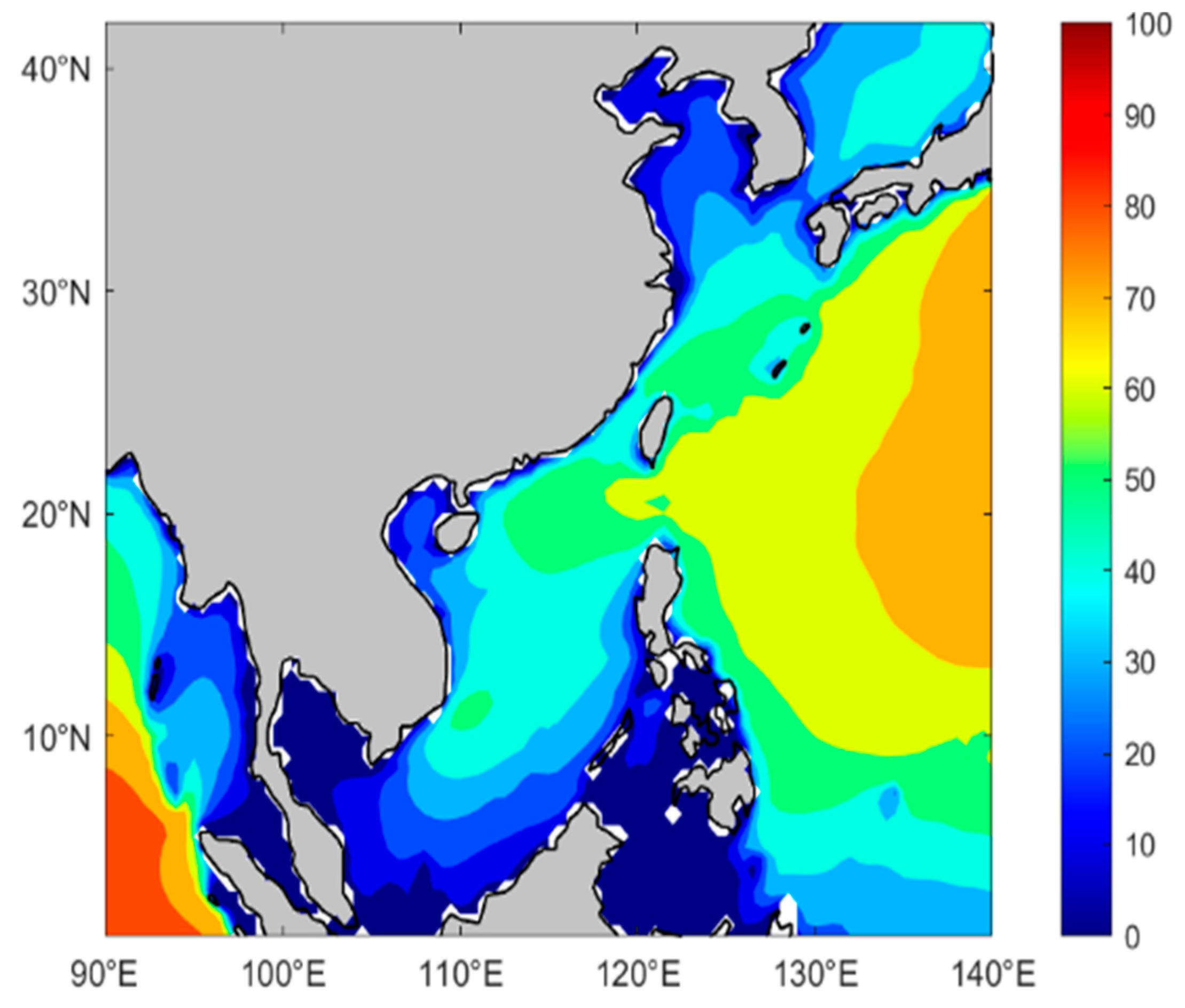
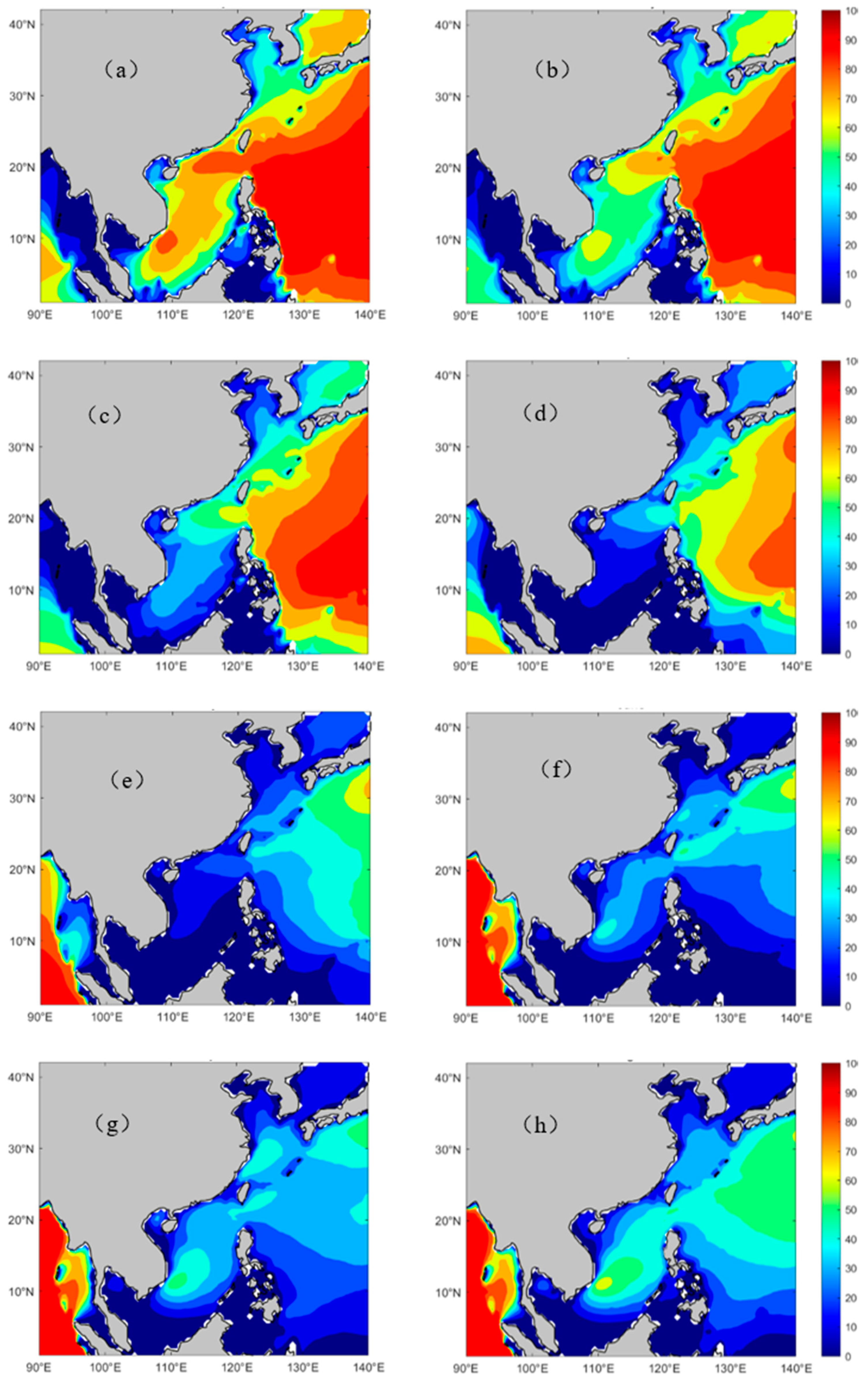


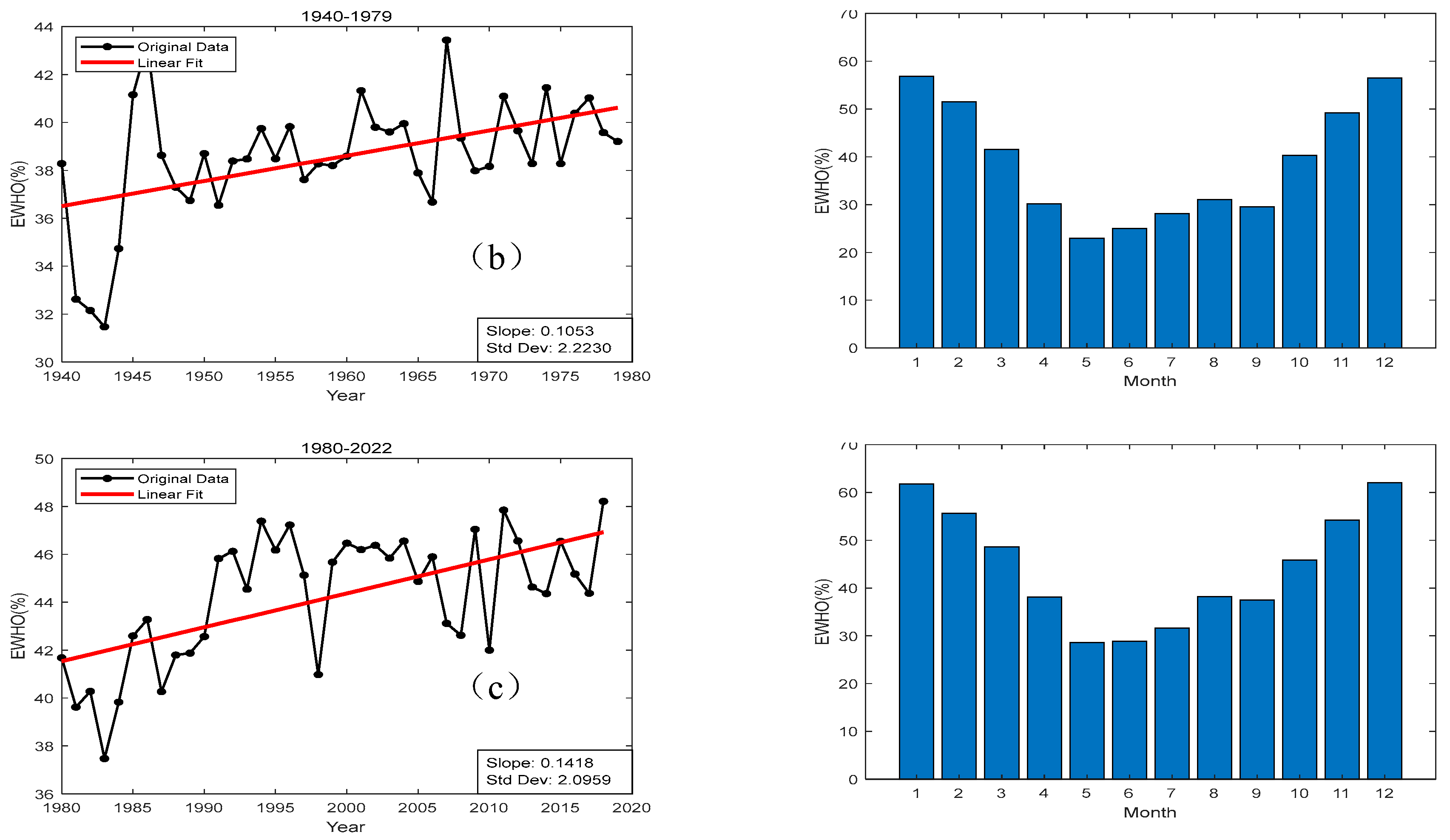


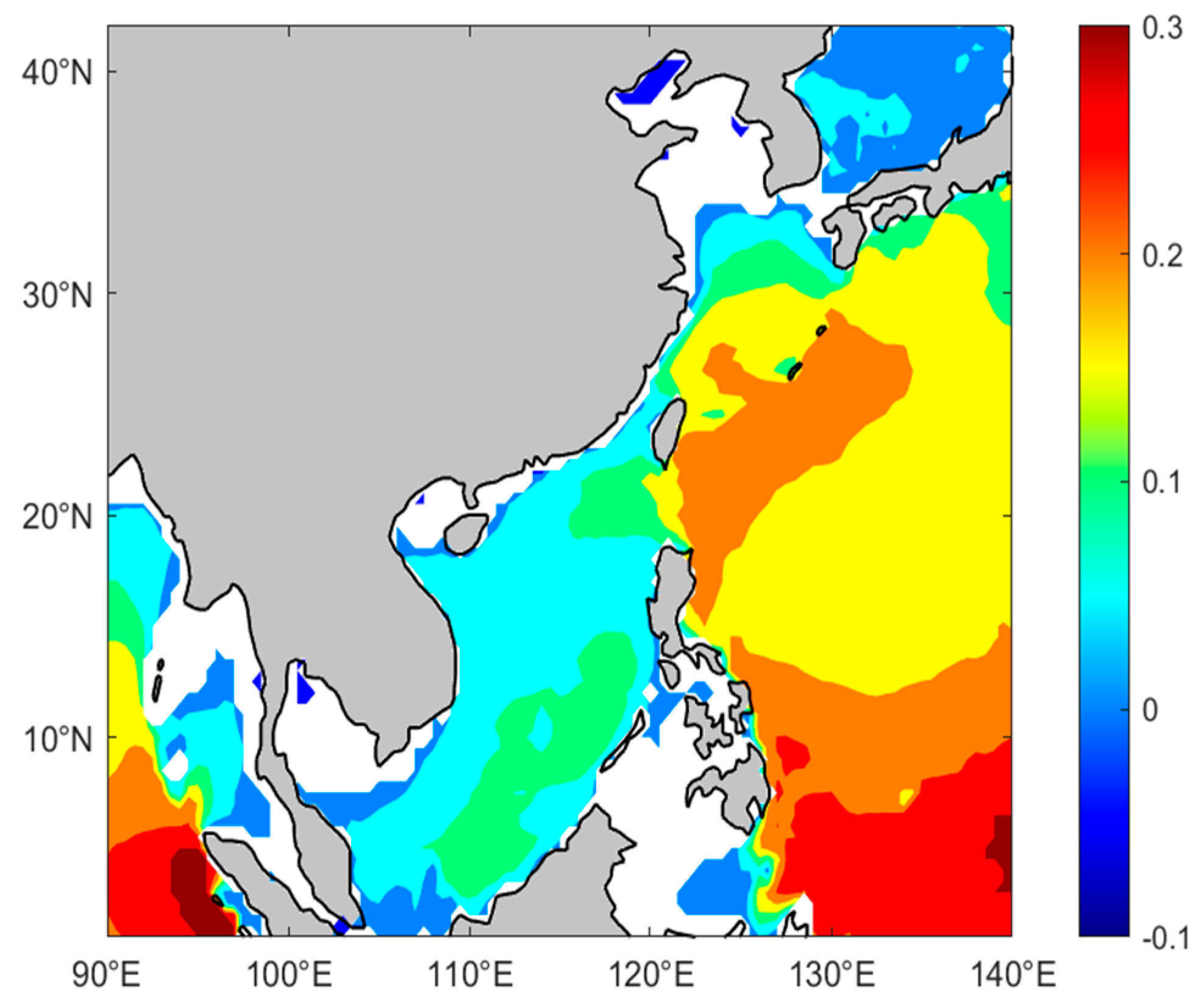
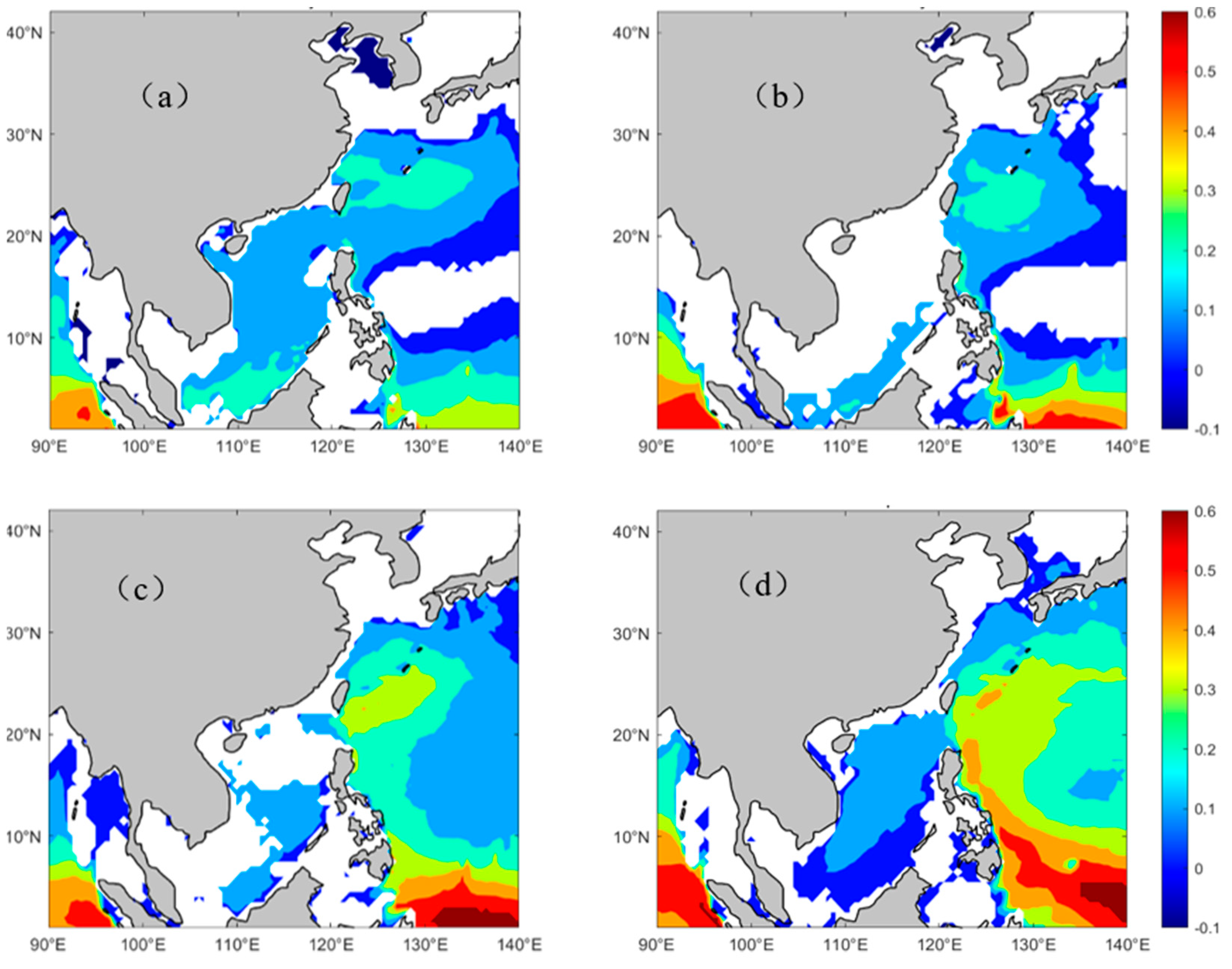

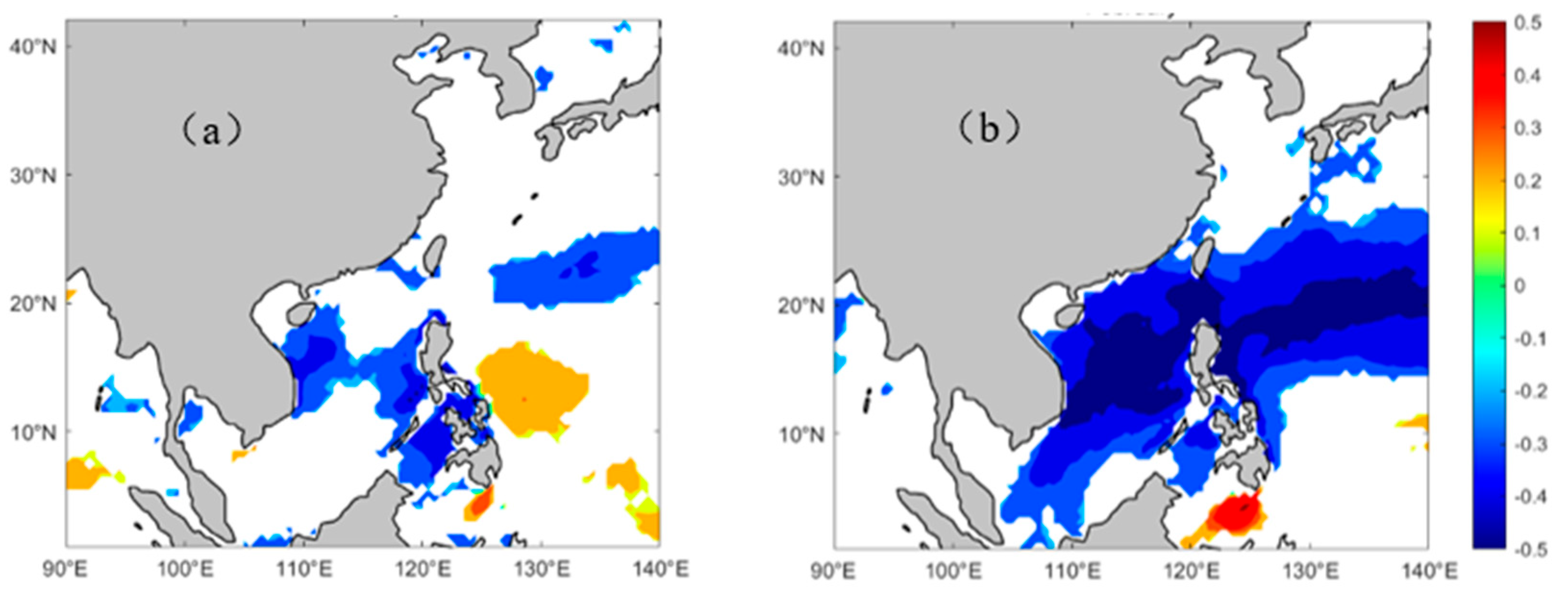
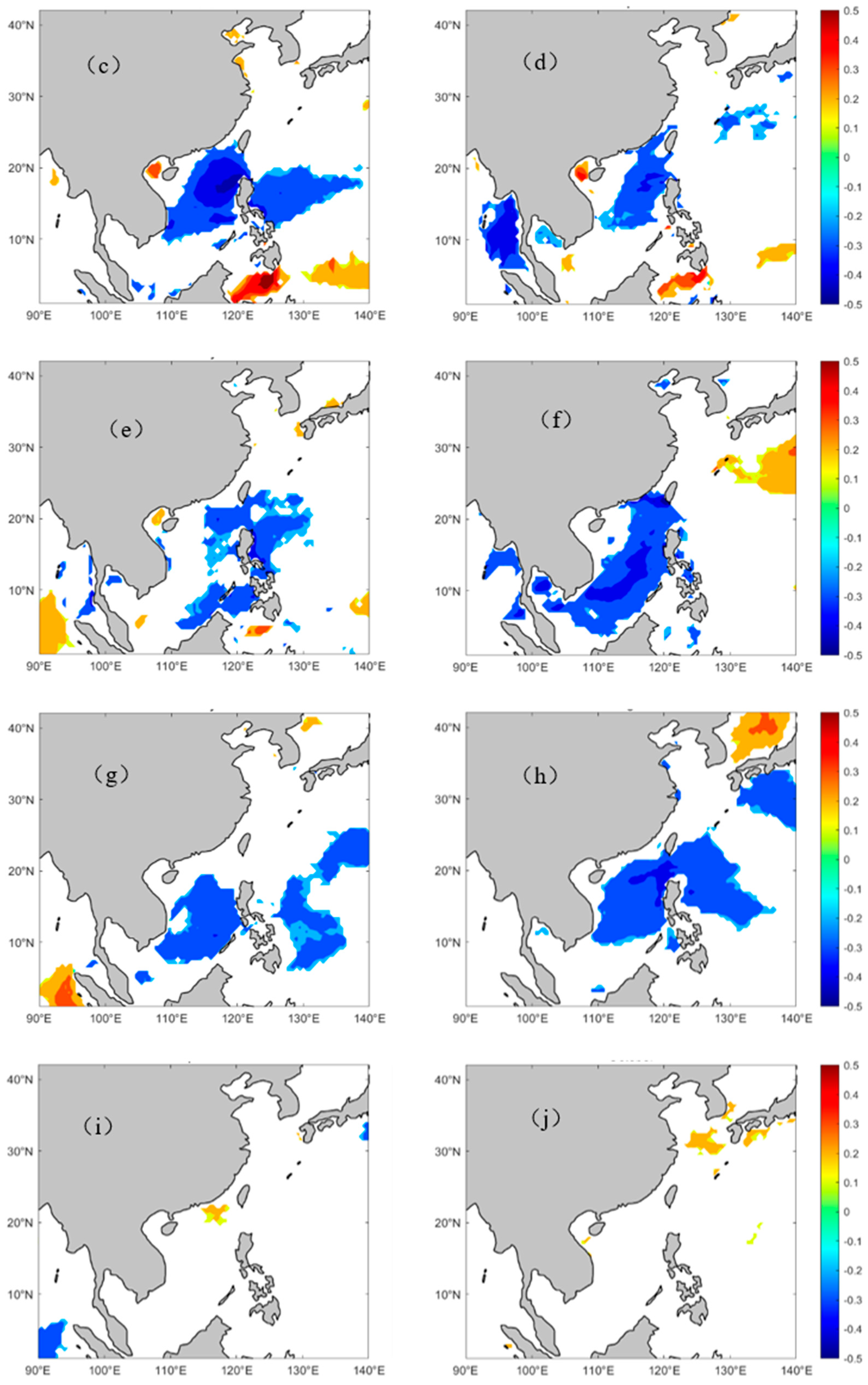
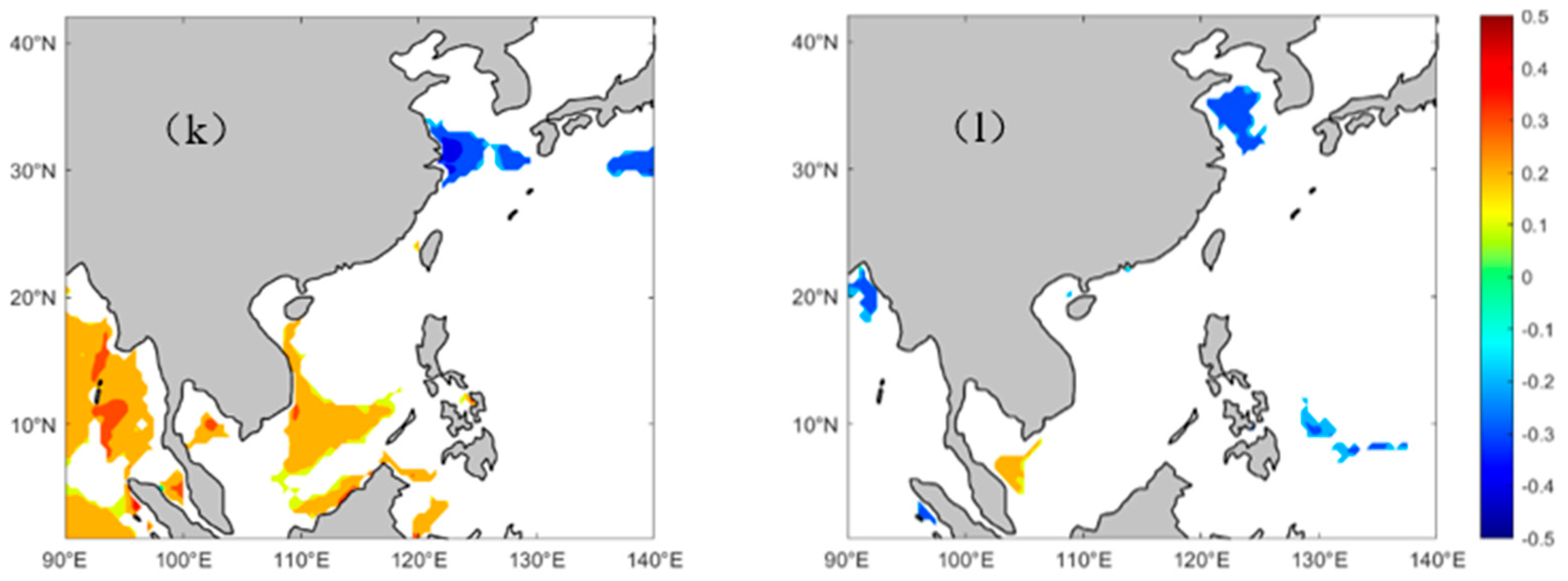

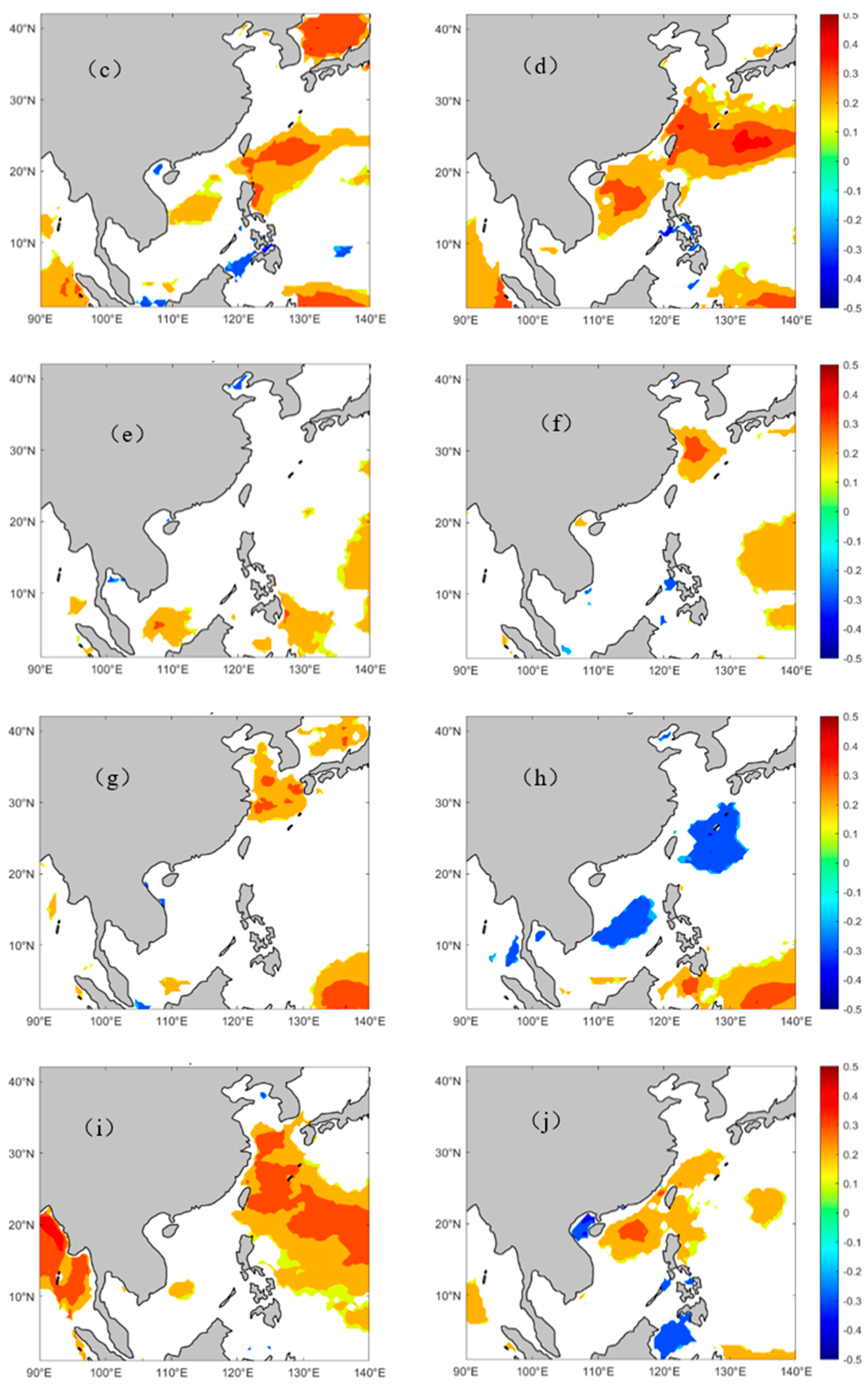
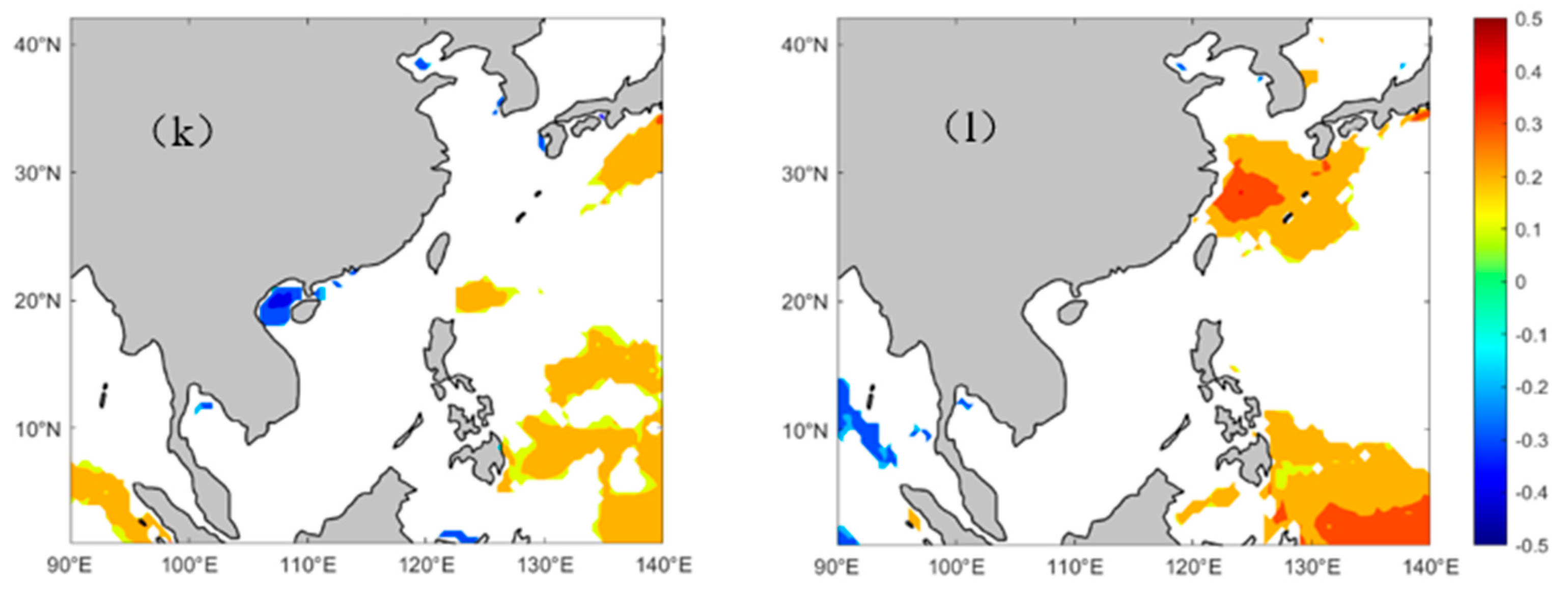
Disclaimer/Publisher’s Note: The statements, opinions and data contained in all publications are solely those of the individual author(s) and contributor(s) and not of MDPI and/or the editor(s). MDPI and/or the editor(s) disclaim responsibility for any injury to people or property resulting from any ideas, methods, instructions or products referred to in the content. |
© 2025 by the authors. Licensee MDPI, Basel, Switzerland. This article is an open access article distributed under the terms and conditions of the Creative Commons Attribution (CC BY) license (https://creativecommons.org/licenses/by/4.0/).
Share and Cite
Shen, R.-Z.; Yi, C.-T.; Liu, Y.-N.; Wang, L.; Wu, K.; Chen, M.-Y.; Zheng, C.-W. The Spatial–Temporal Characteristics of Wave Energy Resource Availability in the China Seas. J. Mar. Sci. Eng. 2025, 13, 1042. https://doi.org/10.3390/jmse13061042
Shen R-Z, Yi C-T, Liu Y-N, Wang L, Wu K, Chen M-Y, Zheng C-W. The Spatial–Temporal Characteristics of Wave Energy Resource Availability in the China Seas. Journal of Marine Science and Engineering. 2025; 13(6):1042. https://doi.org/10.3390/jmse13061042
Chicago/Turabian StyleShen, Rui-Zhe, Cheng-Tao Yi, Yu-Nuo Liu, Lei Wang, Kai Wu, Mu-Yu Chen, and Chong-Wei Zheng. 2025. "The Spatial–Temporal Characteristics of Wave Energy Resource Availability in the China Seas" Journal of Marine Science and Engineering 13, no. 6: 1042. https://doi.org/10.3390/jmse13061042
APA StyleShen, R.-Z., Yi, C.-T., Liu, Y.-N., Wang, L., Wu, K., Chen, M.-Y., & Zheng, C.-W. (2025). The Spatial–Temporal Characteristics of Wave Energy Resource Availability in the China Seas. Journal of Marine Science and Engineering, 13(6), 1042. https://doi.org/10.3390/jmse13061042





